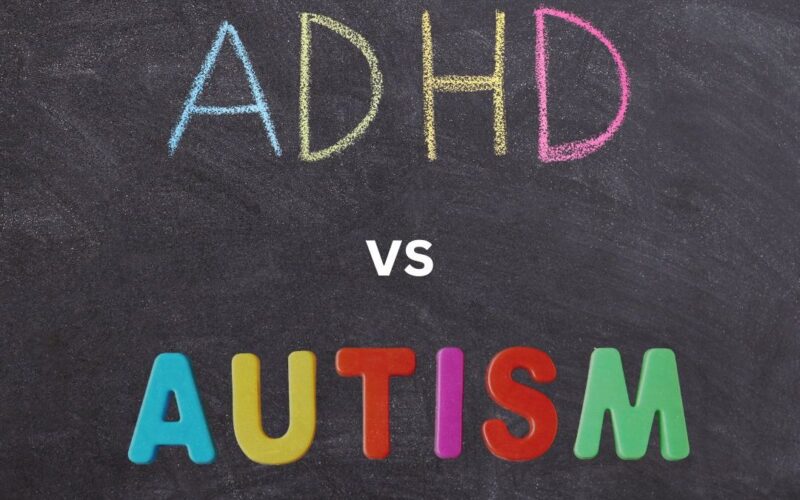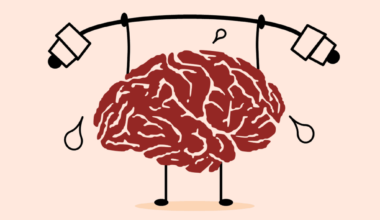ADHD and autism can show up in a person in similar ways so, understanding the difference between Autism Spectrum Disorder (ASD) and Attention-Deficit/Hyperactivity Disorder (ADHD) is important for accurate diagnosis, effective intervention, and appropriate support for people with neurodevelopmental challenges. While both ASD and ADHD share some overlapping characteristics, they are distinct conditions with unique features and presentations. So maybe you know someone who demonstrates certain weird traits but you are not sure if it’s autism or ADHD, this article aims to delve into the key difference between Autism and ADHD, giving you insights into what to look out for when assessing these disorders.
Key Takeaways
- Autism Spectrum Disorder is a neurodevelopmental condition characterized by challenges in social communication and interaction, restricted interests, repetitive behaviors, and sensory sensitivities.
- Early signs and developmental milestones linked to autism spectrum disorders (ASD) are speech delays, unusual speech patterns, or lack of spoken language, difficulty with social communication and social interaction, repetitive behaviors such as rocking or pacing, and sensory challenges.
- Attention-Deficit/Hyperactivity Disorder is characterized by difficulties with attention, impulse control, hyperactivity, and executive functioning.
- Their key traits include inattention, distractibility, and difficulty sustaining focus on tasks. Impulsivity, acting without thinking, and difficulty waiting for turns.
- ADHD (Attention-Deficit/Hyperactivity Disorder) is not a part of autism, however, the two conditions can co-occur in some individuals.
- ADHD can sometimes be mistaken for autism spectrum disorder (ASD), especially in children, due to overlapping symptoms and challenges.
What is Autism Spectrum Disorder ASD?

Autism Spectrum Disorder is a neurodevelopmental condition characterized by challenges in social communication and interaction, restricted interests, repetitive behaviors, and sensory sensitivities. Some key features of ASD can be difficulty understanding social cues like facial expressions, tone of voice, and body language, limited interest in socializing, forming friendships, understanding social norms, engaging in repetitive behaviors (e.g., hand-flapping, rocking), and having rigid routines and sensory sensitivities, such as being hyper- or hypo-sensitive to sensory stimuli.
Early Sign and Developmental Milestones For Autism
Autism spectrum disorder (ASD) signs and developmental milestones might differ greatly from person to person, but parents and caregivers can watch out for certain warning signals and behaviors. I always advise early identification and intervention because it can greatly improve a child’s chances of developing autism. These early signs and developmental milestones are linked to autism spectrum disorders (ASD):
- Speech delays, unusual speech patterns, or lack of spoken language
- Difficulty with social communication and social interaction
- Repetitive behaviors such as rocking or pacing
- Sensory challenges (under- or over-reactive to light, sound, taste, smell, touch)
What is Attention-Deficit/Hyperactivity Disorder (ADHD)?

On the other hand, Attention-Deficit/Hyperactivity Disorder is characterized by difficulties with attention, impulse control, hyperactivity, and executive functioning. Their key traits include inattention, distractibility, and difficulty sustaining focus on tasks. Impulsivity, acting without thinking, and difficulty waiting for turns. Hyperactivity, restlessness, and excessive fidgeting or movement.
Challenges with executive functions like organization, time management, and impulse control. These characteristics, in my opinion, are likely to differ from person to person, but you should constantly
Types of ADHD

Just like autism, this disorder manifests in different forms. ADHD (Attention-Deficit/Hyperactivity Disorder) is typically categorized into three main types. Based on the predominant symptoms observed in most individuals who approach me for assistance, these types are:
Predominantly Inattentive Presentation (ADHD-PI):
It is characterized by significant difficulties with attention and focus. Its common signs include distractibility, forgetfulness, disorganization, and difficulty sustaining attention on tasks. Individuals with ADHD-PI may appear dreamy, spaced out, or disengaged in situations that require sustained mental effort. They also struggle with following instructions, completing tasks, and staying organized.
Predominantly Hyperactive-Impulsive Presentation (ADHD-HI):
This form of ADHD is characterized by hyperactivity and impulsivity without significant inattention symptoms. The common signs include restlessness, fidgeting, excessive talking, interrupting others, difficulty waiting for turns, and impulsive decision-making. Individuals with ADHD-HI have trouble sitting still, often appear “on the go,” and can engage in risky or impulsive behaviors without considering consequences.
Combined Presentation (ADHD-C):
This particular form is characterized by a combination of inattention, hyperactivity, and impulsivity symptoms. Individuals with ADHD-C exhibit symptoms from both the predominantly inattentive and predominantly hyperactive-impulsive types. They could struggle with attention, focus, hyperactivity, impulsivity, organization, time management, and social interactions.
Signs of ADHD

ASD and ADHD might have similar symptoms. Still, there are recognizable, distinctive characteristics to look out for when a person appears to have ADHD. These are the symptoms that, in my opinion, a patient should exhibit before it is determined that they have ADHD. Let’s explore them.
Inattention and Distractability:
What if we said that people with ADHD and extroverts belong to the same personality class? Will it be fair? Well, people with ADHD typically have trouble focusing, especially on activities that are tedious or require sustained mental effort. They lack organization, are frequently distracted, and are largely forgetful. They always tend to shy away from or are unwilling to work on things that call for extended mental effort, such as complicated projects or schoolwork.
Hyperactivity:
You can tell they are dealing with ADHD, when someone exhibits excessive talking, interrupts others during conversations or activities, fidgets, and gets restless in the slightest.
Impulsivity:
Another serious sign of this disorder is that they are always quick to speak. They tend to act impulsively most times without considering the consequences, or answering questions before they are even asked. They find it difficult to control impulses and always attempt risky or impulsive behavior.
Is ADHD a Part Of Autism?

With my experience as a therapist, and wealth of knowledge about these disorders, ADHD (Attention-Deficit/Hyperactivity Disorder) is not a part of autism, however, the two conditions can co-occur in some individuals. They are separate neurodevelopmental disorders with distinct diagnostic criteria, although they can share some overlapping symptoms and challenges.
Autism spectrum disorder (ASD) is known for difficulties in social communication and interaction, restricted interests, repetitive behaviors, and sensory sensitivities. ADHD, on the other hand, is characterized by challenges with attention, impulse control, hyperactivity, and executive functioning.
While ADHD is not a part of autism, studies have shown that children and adults with autism are more likely to have co-occurring ADHD compared to the general population. The co-occurrence of ADHD and autism can present unique challenges and may require a comprehensive evaluation and tailored interventions to address both conditions effectively.
As a healthcare professional, I usually conduct thorough assessments and consider the possibility of co-occurring conditions when evaluating individuals with autism or ADHD. This allows for a holistic approach to treatment that addresses all relevant symptoms and support needs.
Is ADHD Sometimes Mistaken for Autism?

Yes, ADHD can sometimes be mistaken for autism spectrum disorder (ASD), especially in children, due to overlapping symptoms and challenges. These are reasons why ADHD may be mistaken for autism:
Overlap in Symptoms:
Both ADHD and autism can exhibit symptoms such as difficulties with social interaction, impulse control, attention, and executive functioning. For example, children with ADHD struggle with social skills, have trouble focusing, and exhibit hyperactive or impulsive behaviors, which can resemble some aspects of autism.
Co-Occurrence:
ADHD and autism can co-occur in some individuals, leading to a combination of symptoms that may be challenging to differentiate without a comprehensive evaluation by healthcare professionals. The presence of ADHD symptoms within an individual with autism can complicate diagnosis and lead to potential misinterpretation of behaviors.
Variability in Presentation:
Both ADHD and autism have a wide range of presentations and symptom severity levels. This variability can contribute to diagnostic challenges and potential confusion, particularly when individuals exhibit atypical or overlapping symptoms.
Developmental Trajectories:
ADHD and autism can manifest differently at different developmental stages. For example, young children with ADHD may exhibit hyperactivity, impulsivity, and attention difficulties, which can be mistaken for autism if social communication challenges are also present.
Diagnostic Criteria:
The diagnostic criteria for ADHD and autism are distinct but may share some commonalities, such as difficulties in social interaction and communication. However, the specific criteria and focus areas for each disorder differ, highlighting the importance of a thorough assessment by trained professionals.
What Are the Similarities Between ADHD and Autism?

As we have established earlier, ADHD (Attention-Deficit/Hyperactivity Disorder) and autism spectrum disorder (ASD) share some similarities in terms of symptoms and challenges, which can sometimes lead to confusion or misdiagnosis. These are some key similarities between ADHD and autism I have personally observed.
Social Communication Challenges:
Both ADHD and autism can involve difficulties in social communication and interaction. Children and adults with ADHD struggle with social skills such as taking turns, listening attentively, and understanding social cues. Individuals with autism also have challenges in social communication, including difficulties in understanding nonverbal cues, maintaining eye contact, and interpreting others’ emotions.
Attention and Focus Issues:
Attention difficulties are a hallmark feature of ADHD, characterized by problems with sustaining attention, staying organized, and completing tasks. People with autism also experience attention challenges, such as difficulty focusing on specific tasks, becoming easily distracted, and having a narrow focus on particular interests or topics.
Executive Functioning Deficits:
Both ADHD and autism can involve deficits in executive functioning skills, which include abilities such as planning, organization, time management, and impulse control. Children and adults with ADHD struggle with executive functions, leading to difficulties in prioritizing tasks, managing deadlines, and regulating emotions. People with autism also exhibit executive function deficits, impacting their ability to initiate tasks, switch between activities, and cope with changes in routine.
Behavioral Challenges:
Both ADHD and autism can manifest with behavioral challenges, such as impulsivity, hyperactivity, emotional dysregulation, and difficulty in self-control. Children and adults with ADHD display impulsive behaviors like interrupting conversations, blurting out answers, and acting without considering consequences. They also exhibit impulsive or repetitive behaviors, especially when faced with sensory overload or changes in their environment.
Sensory Sensitivities:
Sensory sensitivities are common in both ADHD and autism, although they could manifest differently. People with ADHD could be sensitive to sensory stimuli such as noise, lights, or textures, which can affect their concentration and behavior. Also, people with autism often experience heightened sensory sensitivities, leading to reactions such as aversion to certain sounds, textures, or smells, and seeking or avoiding specific sensory experiences.
How Can I Tell the Differences Between ADHD and Autism in Adults And Children?

Although there are some similarities between ADHD and autism, it’s important to remember that both conditions are different from one another with their own diagnostic criteria, underlying causes, and methods of treatment. To effectively distinguish between ADHD and autism and to provide the right interventions and support, a thorough evaluation by professionals who specialize in neurodevelopmental disorders is required.
Key differences when checking for autism and ADHD both in children and adults are:
- Social Communication and Interaction: ASD is characterized by pronounced challenges in social communication and understanding social cues, WHILE ADHD primarily manifests as impulsivity, hyperactivity, and inattention in social settings.
- Repetitive Behaviors: Repetitive behaviors and restricted interests are more prominent in ASD, WHEREAS ADHD symptoms focus more on impulsivity, hyperactivity, and distractibility.
- Sensory Sensitivities: Sensory sensitivities are a common feature of ASD, WHEREAS they may occur in ADHD but are not as central to the diagnosis.
- Executive Functioning: ADHD is characterized by prominent difficulties with executive functions such as organization, time management, and impulse control, WHILE these challenges are less central in ASD.
Diagnostic Process and Evaluation

Diagnosing ASD or ADHD requires a thorough assessment by “qualified” healthcare professionals, including pediatricians, psychologists, psychiatrists, or developmental specialists. The diagnostic process may involve:
- Medical and developmental history review.
- Behavioral observations and assessments.
- Screening tools and standardized assessments.
- Collaboration with parents/caregivers, educators, and other professionals.
- Consideration of co-occurring conditions and comorbidities.
Intervention and Support for ADHD and Autism

Once a diagnosis is established, people with ASD or ADHD benefit from specialized interventions and support strategies
ASD Interventions:
Applied Behavior Analysis (ABA), social skills training, speech-language therapy, occupational therapy, sensory integration techniques, and educational accommodations.
ADHD Interventions:
Behavioral therapy, executive function coaching, medication (when appropriate), organizational skills training, and classroom accommodations.
Conclusion
So far, I have discovered that it takes an in-depth understanding of each condition’s distinctive traits, symptoms, and presentations to distinguish between Attention-Deficit/Hyperactivity Disorder (ADHD) and Autism Spectrum Disorder (ASD). Healthcare providers, educators, and caregivers like myself can help people with neurodevelopmental problems live normal lives by identifying significant differences and early warning signs and providing prompt, individual-focused interventions and support.
Related Articles
- Signs & Practical Treatment for Mild Autism in 2025 (Updated)
- These Are 23 Best Jobs for People with ADHD
- High-Functioning Autism in Women: Signs and Treatment
- What Are the Different Types of Autism? Detailed 2025 Guide
- Free Autism Test for Teens 2024: How to Know Guide
- 51+ Super Positive and Inspiring Mental Health Quotes






